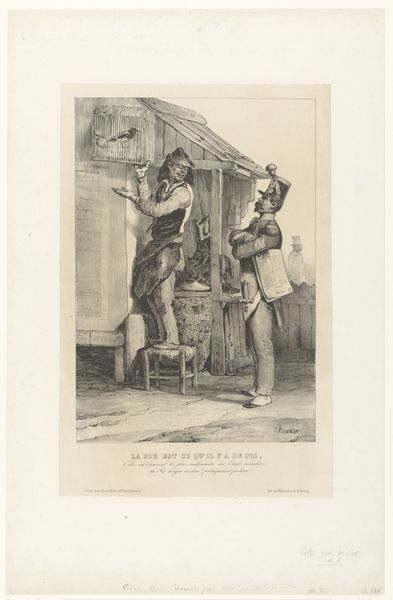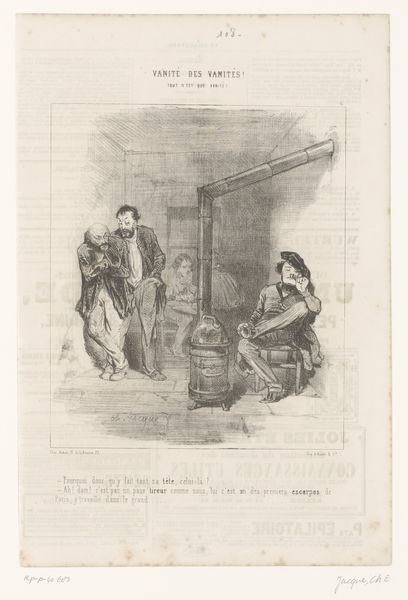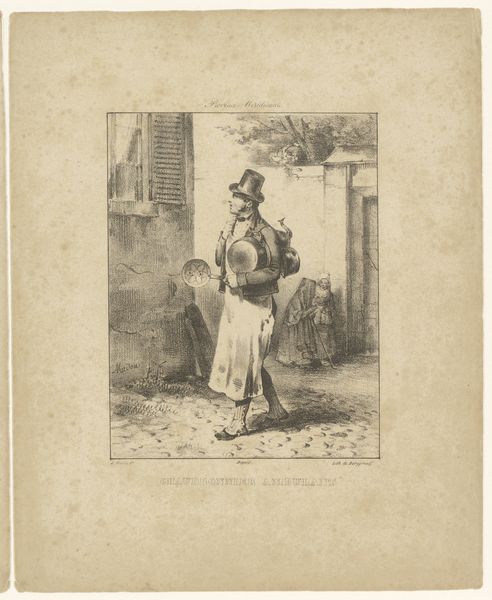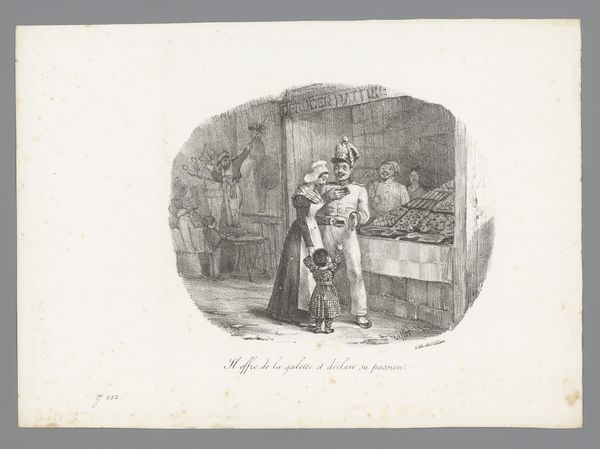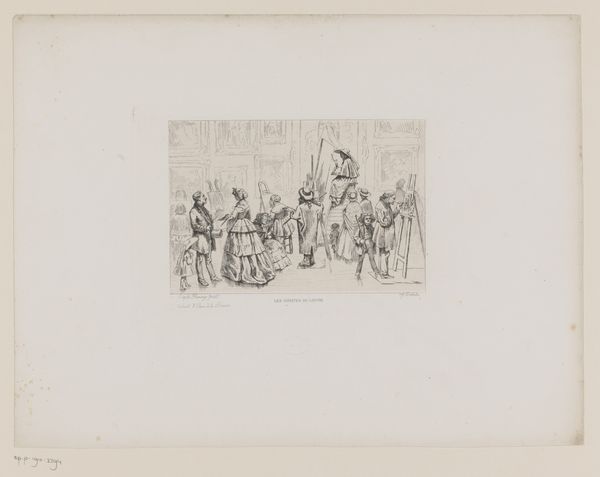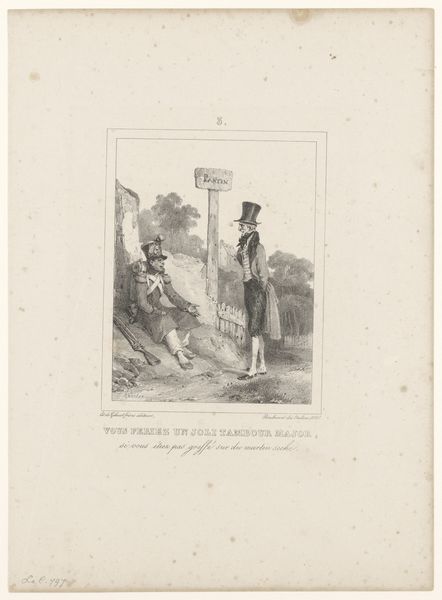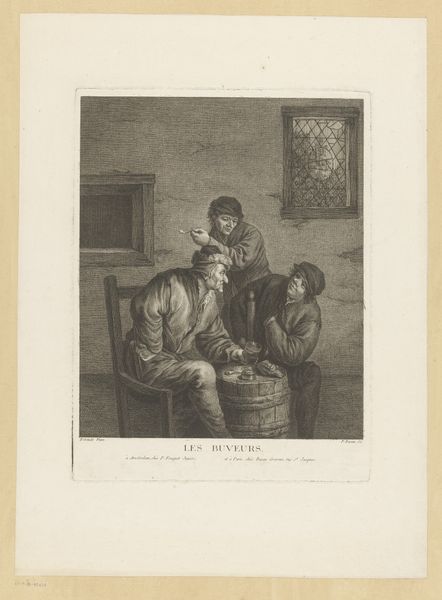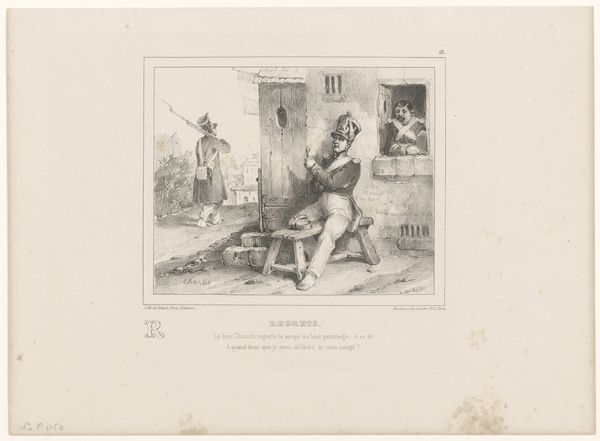
A Paraleytic Woman, plate 9 from Various Subjects Drawn from Life on Stone 1821
0:00
0:00
drawing, lithograph, print, paper
#
portrait
#
drawing
#
narrative-art
#
lithograph
# print
#
figuration
#
paper
#
romanticism
Dimensions: 226 × 317 mm (image); 376 × 496 mm (sheet)
Copyright: Public Domain
Théodore Géricault created this lithograph, titled "A Paralytic Woman," amidst the social upheavals of 19th-century France. Géricault was known for his interest in marginalized people, and this work offers a glimpse into the lives of those often overlooked. In the print, a woman sits wearily, supported by what appears to be a cart. Her posture and the title suggest paralysis, and the artist captures a sense of resignation in her bowed head. A child stands nearby, bearing witness. The artist positions the viewer to empathize with their plight, rather than pity it. Géricault challenges the traditional, idealized representations of women in art, instead presenting a stark portrayal of disability and poverty. He captures the raw realities of life for those on the fringes of society, inviting us to confront uncomfortable truths about inequality and human suffering. The emotional weight of the scene lingers, a testament to the artist’s skill in evoking empathy and awareness.
Comments
No comments
Be the first to comment and join the conversation on the ultimate creative platform.

